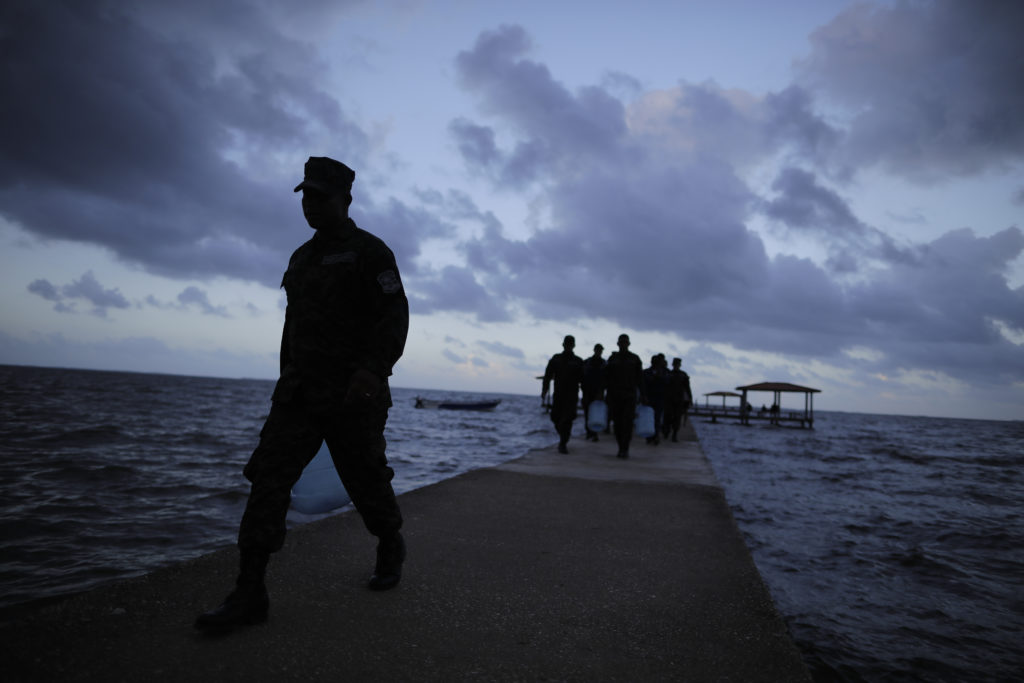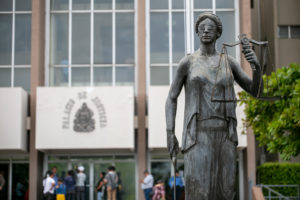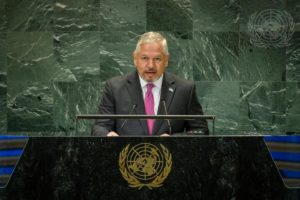Despite recognition from international organizations of Honduras’ efforts to protect La Moskitia, a remote jungle region in the easternmost department of Gracias a Dios, the Miskito, Tawahka, Pech and Garífuna people are still vulnerable to deforestation, violence and forced displacements. A commission responsible for ensuring land is returned to these Indigenous groups has made little progress since its creation in 2019, while an illegal highway threatens the region, which should be protected by the State.
Text: María Celeste Maradiaga
Photography: Jorge Cabrera
Translation: José Rivera
An illegal highway that cuts across the Río Plátano Biosphere Reserve could threaten communities in the Diunat territorial council in La Moskitia, Honduras. The highway extends from the department of Colón to the municipality of Brus Laguna, department of Gracias a Dios.
In 2021, it became known that a “narco-highway” that extends from Dulce Nombre de Culmí, Olancho, to the village of Krausirpi, municipality of Wampusirpi, Gracias a Dios, had been built. Manuel Zelaya, adviser and husband of President Xiomara Castro, entered into negotiations with cattle ranchers to discuss the highway. Zelaya promised it would not be destroyed if extensive cattle ranching is discontinued.

The administration of former President Juan Orlando Hernández decreed the creation of a commission in July 2019 to begin the process of land restitution in La Moskitia in coordination with the National Agrarian Institute (Instituto Nacional Agrario – INA), Secretariat of Governance (Secretaría de Gobernación), National Institute of Conservation (Instituto Nacional de Conservación – ICF), and the Union of Afro and Indigenous Peoples of La Moskitia in Honduras (Unión de Pueblos Indígenas y Negros de la Moskitia Hondureña – UPNMH). The process to reclaim the land continues under Castro’s administration.
However, Indigenous groups and the commission did not participate in the negotiations. Although the commission was created to protect the land and its natural resources and to streamline denunciations of illegal occupations by “outsiders who act in bad faith,” cattle ranchers continue to invade the region. Furthermore, the drug trade prevails in regions adjacent to the departments of Olancho and Colón where the Río Plátano Biosphere Reserve and the Tawahka Asangni Biosphere Reserve are located.
According to data from ICF, deforestation in La Moskitia increased by 2.14 percent between 2019 and 2020, the period when the decree was issued.
While Luis Soliz, director of ICF, is aware of the destruction caused by the invasion of cattle ranchers in protected areas within Miskito territory and the harassment and persecution of locals, who “are forced to sell their land,” he doesn’t rule out an agreement between them and individuals who “decided to settle there” and have not caused any damage to the region.
“The Miskito, Pech, Tawahka and Garífuna people will decide who is allowed in their territory,” Soliz told Contracorriente.
Land titles were granted to 15 territorial councils between 2012 and 2015: Twelve Miskito, one Tawahka, one Pech and one Garífuna. This is a way of recognizing the autonomy and rights of Indigenous peoples over their territory, including consultations carried out by leaders of communities to determine if the population agrees with projects on their land.
In addition, land titles stipulate that land owned by communities cannot be seized or taken by individuals or institutions and it cannot be divided to benefit another landowner or for any other purposes. While Indigenous groups are settled in territories adjacent to the Río Plátano Biosphere Reserve, they do not hold land titles over territory within the protected area.
Although the 15 territorial councils hold land titles, dispossession and violence against the Miskito, Tawahka, Pech and Garífuna people continue despite promises from the Castro administration to protect their integrity and land rights.
Shirley Caballero, member of the commission in representation of INA, says it’s been difficult to reclaim land in the Diunat territorial council because of the conflict that arose when the narco-highway was built.


Caballero’s statements were seconded by another source who explained that in order to build the highway, individuals settled in Colón (including cattle ranchers) signed an agreement with the leader of Las Marías territorial council, which is inhabited by the Pech people. However, he claimed he did not know what the agreement was about.
Diunat, a Miskito community, and the Mayor’s Office in Brus Laguna oppose the highway because the region has been pillaged by extensive cattle ranching. Our source says the Mayor’s Office in Palacios, in the municipality of Juan Francisco Bulnes, which is adjacent to the department of Colón and encompasses part of Río Plátano Biosphere’s nucleus, authorized the highway.
A few weeks ago, Soliz said 36,000 hectares in the Hombre and Río Plátano Reserves have been deforested as a result of the drug trade, and activities in the narco-highway from Olancho to Gracias a Dios came to a halt.
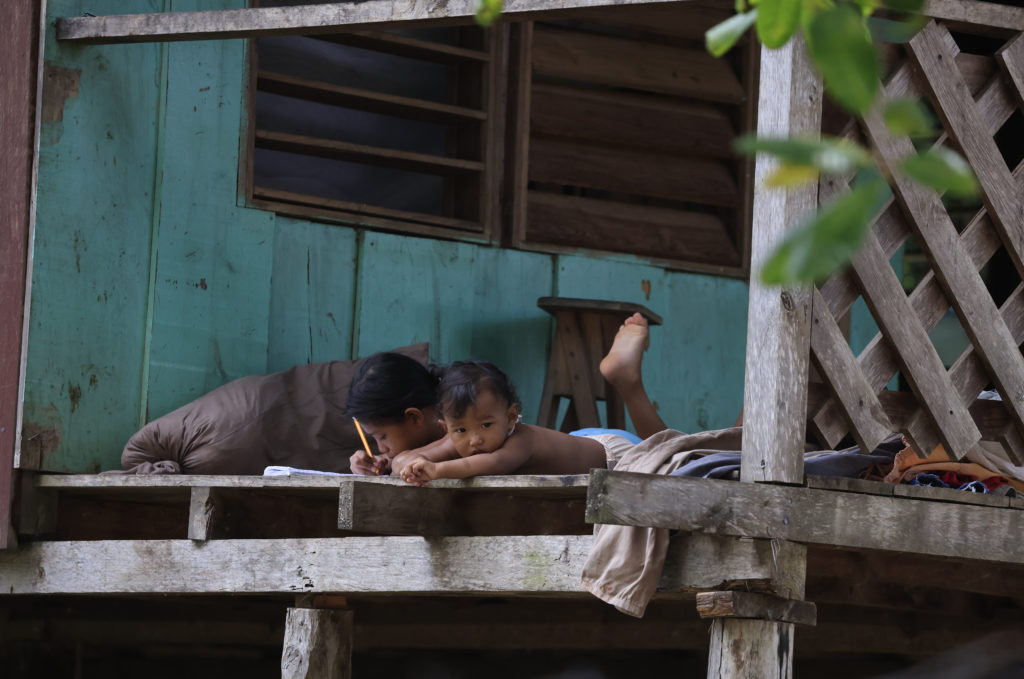
Soliz explained that since President Castro took office in January 2022, meetings with parties involved in the conflict have been held. But so far, the process of land restitution has only taken place in the Bakinasta territorial council, located between the municipalities of Wampusirpi and Puerto Lempira and adjacent to the Tawahka territorial council and Río Plátano Biosphere’s nucleus. The first step consisted of establishing a land restitution plan with the participation of locals and cattle ranchers who have settled in the territory. Rules will be subsequently defined by all parties involved.
Meetings with cattle ranchers
According to Rafael Alegría—assistant director at INA, the institution that leads the commission—the land conflict in La Moskitia not only involves Indigenous groups and cattle ranchers but also businessmen and powerful landowners. He says the Castro administration has shown interest in reclaiming the land for Indigenous people.
“The State is in a more advantageous position to use its political and judicial powers, but we cannot ignore reality. There are individuals who have significant economic and political power and form ranching associations,” Alegría said without specifying who controls the region.
Caballero said that between late 2021 and 2023 operations were carried out throughout Gracias a Dios to identify locations where invaders or terceros are settled. She told Contracorriente that INA obtained 106 confidential affidavits from cattle ranchers in the region with the support of agents from the Secretariat of Defense and other institutions that are part of the commission.
President Castro had given orders for such operations to continue and asked each territorial council in La Moskitia to establish protocols to determine if an outsider or tercero has caused any damage to the region.
“They thought we were going to evict them, and that’s not the objective but to do some housekeeping. While it’s true that land titles were granted to each territorial council, there were people who had already settled in those areas, and this makes the situation more difficult because they’re not Indigenous,” Caballero said.
According to the Confederation of Indigenous Peoples of Honduras (Confederación de Pueblos Autóctonos de Honduras – CONPAH) and Forest Trends, Miskito, Pech, Tawahka and Garífuna territories in La Moskitia comprise more than 1.5 million hectares.
Initial meetings related to the process of land restitution began in the Bakinasta territorial council because this is where part of the first illegal highway is located. It stretches from Catacamas, Olancho, to the village of Krausirpi, municipality of Wampusirpi, Gracias a Dios, within the Tawahka Asagni Biosphere Reserve.
In addition to illegal logging and extensive cattle ranching, both of which have led to a shortage of water in communities, Caballero says judges are also part of the conflict because they have granted land titles to terceros, displacing locals from the region.
“Many have married or have studied with locals, and this should be taken into account during the process of land restitution. It’s easy to say, ‘Let’s evict everyone,’ but what’s going to happen then?” Caballero said.

Regarding the progress made toward reclaiming land for Indigenous groups, Caballeros says 100 percent of the Wamaklisinasta territorial council, south of La Moskitia and adjacent to the Nicaraguan border, has been surveyed, while operations in other territorial councils continue. In the case of Diunat, in northern Gracias a Dios and adjacent to the Río Plátano Biosphere Reserve, they are establishing regulations to reclaim land ownership.
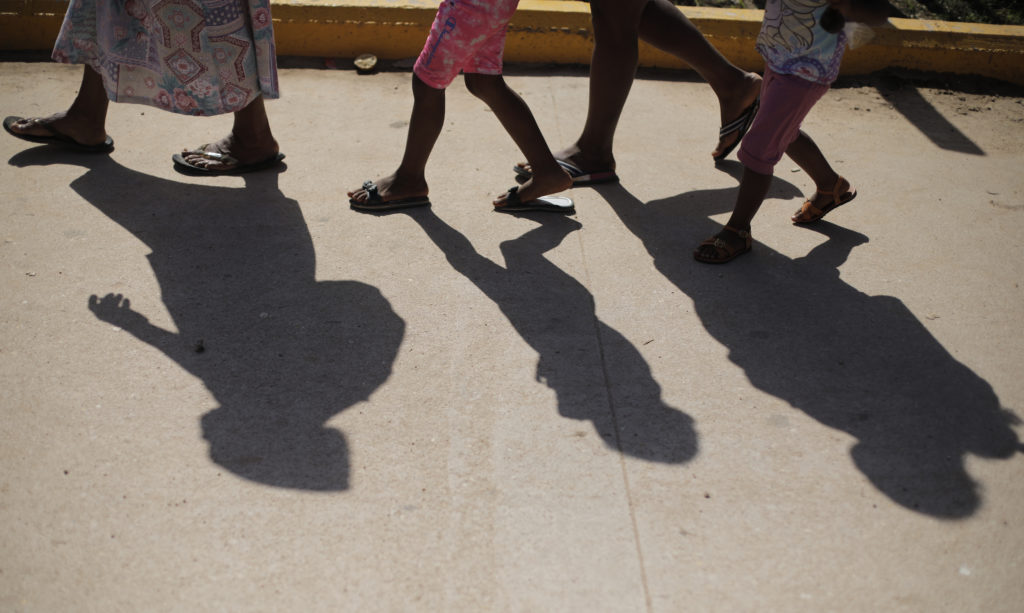
In early 2024, the Autonomous Government of Afro and Indigenous Peoples of La Moskitia in Honduras (Gobierno Autónomo de los Pueblos Indígenas y Afrodescendientes de la Muskitia en Honduras – GAPIAMH) sent a letter to the Castro administration and institutions that form the commission, expressing their rejection of State interference in the land restitution and affirming that ICF does not have the authority to make decisions in Indigenous territories.
“Invasions are due to the lack of clear policy on territory inhabited by Indigenous peoples. To solve this problem, GAPIAMH is drafting its own set of regulations, but we need support from the Honduran State,” the letter reads.
According to Soliz, GAPIAMH’s opposition to the State-led process of land restitution is a response to individuals who are now abroad and have agreed to the construction of the highway, which is heavily condemned by “people who live here.”
He also said that GAPIAMH is not a legitimate authority in communities and they only oppose the sale of carbon credits or the oil concession in La Moskitia but obstruct any attempts by the State at solving the land conflict. While it’s true that some leaders have rejected the process of land restitution, communities have shown their support.
“Communities have made efforts to promote processes to determine who is allowed in their territory, establish their own regulations, and to find out if invaders or cattle ranchers are responsible for any damage to the region,” Soliz told Contracorriente.

